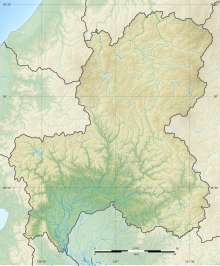푸메도랑스
Poume d'oranges푸메도랑(Poume dorranges)은 중세 음식 문화의 일부였던 중세 요리의 대표적인 금박육(코팅) 음식이다.[1][2][3]계란 노른자 유약을 사용해 오렌지의 색깔을 닮도록 준비했다.[1][4]푸메도랑스 요리는 종종 정중한 영국의 잔치에 사용되었고 중세 요리 원고지에 실려 있다.이 요리는 영국의 헨리 4세의 대관식 메뉴에 인포레 도렝으로 표기되었다.[1][5]
푸메 도랑스(Poume d'oranges)는 앵글로 노먼 원고와 기타 문서에 언급되어 있는데,[1] 이는 아랍 요리가 유럽 요리에 미치는 영향을 지적하고 있다.이러한 영향력은 수세기 동안 아랍인들이 지배했던 11세기에 노르만인들이 시칠리아를 정복했기 때문일 가능성이 크다.스페인 남부에서는 무어족이 수세기 동안 통치했다.중세 시대의 비슷한 요리는 테스테 드 투르케이다.[citation needed]
참고 항목
참조
- ^ a b c d Adamson, M.W. (2013). Regional Cuisines of Medieval Europe: A Book of Essays. Garland Medieval Casebooks. Taylor & Francis. p. 27. ISBN 978-1-135-30868-1. Retrieved June 15, 2017.
- ^ Pullar, P. (1970). Consuming Passions: Being an Historic Inquiry Into Certain English Appetites. Little, Brown. p. 93. Retrieved June 15, 2017.
- ^ Hieatt, C.B.; Nutter, T.; Holloway, J.H. (2006). Concordance of English Recipes: Thirteenth Through Fifteenth Centuries. G - Reference, Information and Interdisciplinary Subjects Series. ACMRS. p. 71. ISBN 978-0-86698-357-0. Retrieved June 15, 2017.
- ^ Walker, H. (1997). Food on the Move: Proceedings of the Oxford Symposium on Food and Cookery, 1996. Oxford Symposium on food & cookery. Prospect Books. p. 122. ISBN 978-0-907325-79-6. Retrieved June 15, 2017.
- ^ Austin, T. (1888). Two Fifteenth-century Cookery-books: Harleian Ms. 279 (ab. 1430), & Harl. Ms. 4016 (ab. 1450), with Extracts from Ashmole Ms. 1429, Laud Ms. 553, & Douce Ms. 55. Early English Text Society (Series).: Original series. Early English text society. p. 58. Retrieved June 15, 2017.
외부 링크
- 푸메도오랑쥬중세 주방.(포르투갈어)


